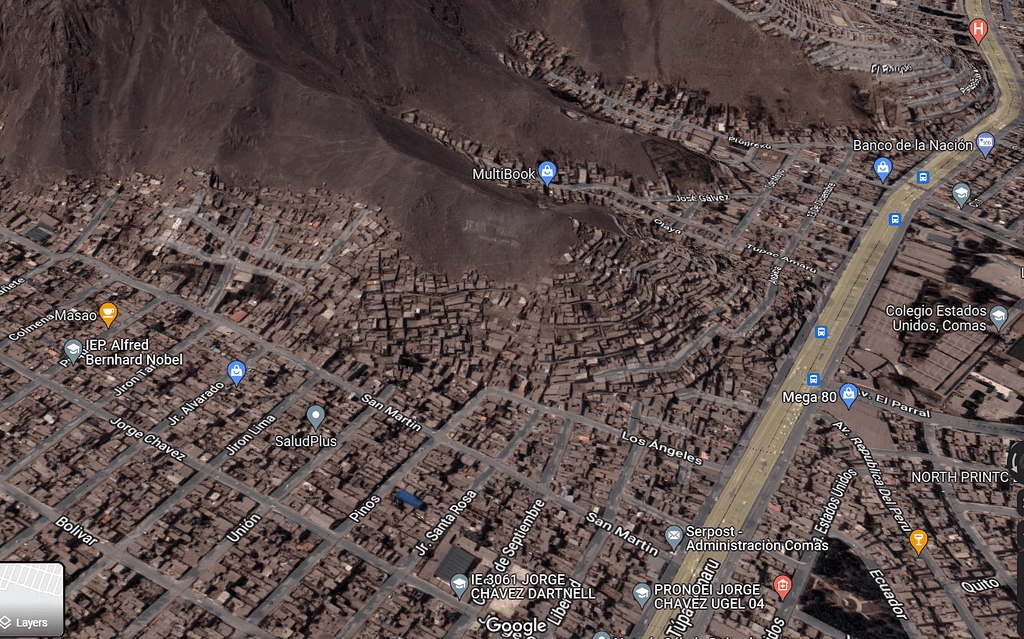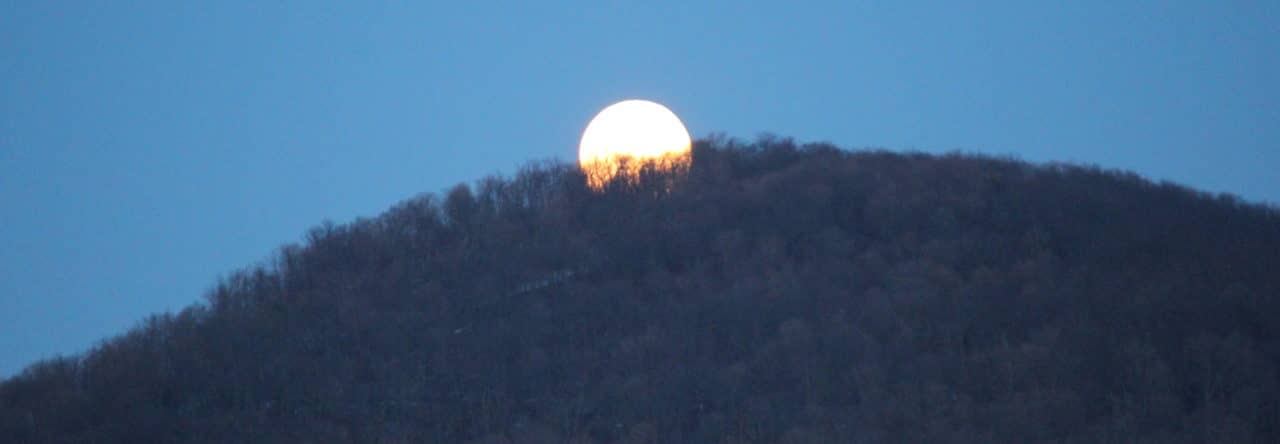This is part one of two for my summary of our third day in Peru. We received permission from the administration of both schools to take pictures of the students.
It took me a while to get started on this post because I really did not know what to say. Our day was an emotional roller coaster and there really is no way to convey this information in a way that I feel comfortable with. Our day would begin at a school in one part of the city and we would end with a visit to a school in another part of the city.
Institución Educativa N°3061 Jorge Chavez Dartnell

For the first few days in Lima we did not leave the more affluent, tourist portion of the city. This would be our first look at how other portions of the population live. About 1/3 of Peru’s population (~11 million people) live in Lima. The majority of these people moved here within the past several decades. Many came with little to no money and could not afford housing so they built structures on the hills surrounding the city. Over time more permanent structures were built but they do not have the infrastructure we see in Miraflores. At this part of the city we didn’t see apartment high rises and vegetation in the medians.

When we pulled up outside of the school, we were asked to wait outside and we would enter one at a time, as they called our name. As each of us walked into the school we would be welcomed by lines of students along the walkway. As we walked through the lines of cheering students we were given the first of our two gifts from the school. This was not the reception I anticipated and it felt undeserving. That being said, it was great to see how excited these students were that we were visiting their school.

Once we entered the main courtyard they had us stand on a walkway while a group of students were organized in front of us. There were some introductions, a greeting, the singing of the Peruvian National Anthem, and the playing of our National Anthem.

There were a few students that were holding up signs welcoming us to their school. Several students had created signs for specific teachers welcoming them to their school. Only a few teachers had posters created for them and I was honored to be one of them.


Once the introductions were over many of the students returned to class. Some students were in class while all this was going on. I’m not sure how it was determined who would be in class and who attended the introductions but I did feel bad for those in class. This campus is very open. It is right in the city and you can hear all the traffic and car horns outside the school walls. In addition, all the doors and windows are open so you can hear everything else going on at the school. As we toured a few classrooms it was very loud and it must be so hard for the students to focus and hear everything going on within the classroom. During our tour we visited their school library, an English-language class where the students sang us a song, and a 1st grade classroom. Those first graders had some of the neatest handwriting I had ever seen!


The Lesson
The day before this visit I was informed that I would be teaching a lesson at this school and that it was a traditional classroom without any technology. The lesson I had planned revolved around the differences in climate between Lima and my area in New York State. I had prepared for the possibility that there would be no way to digitally present the material so I had a hard copy of my resources ready to go. The facilitators of our program made additional copies so that I would have enough to give every student a copy. The materials that I would share are: climographs for Lima and New York, maps of New York State (in both English and Spanish), a snowfall map of NYS, and maps of the global ocean currents (in both English and Spanish). I shared pages 2, 3, and 4 of the NYS Earth Science References Tables with a star to indicate where I lived. All data was converted to metric as that is the system of units that is best and the students would actually understand them.


As we left the meeting room to be split up to go to the classrooms we would be presenting in, we were swarmed by excited students. It was such a strange feeling and the attention was undeserved. We were treated like someone famous. Students were asking to take selfies with us and outstretched arms were handing us their school notebooks for our autograph. For the next twenty minutes this is all we did. I thought that this delay would prevent me from giving my presentation.

Eventually the crowd was dispersed and I was escorted to the computer lab by two students. As I entered the lab there was a semi-circle of chairs with about twenty students waiting for me. This computer lab had a few computers lining the wall but none of them worked. The whole school had one functioning computer. That would not interfere with our lesson though.

I started off the lesson with a brief introduction to who I am and where I am from. Students were able to identify Roxbury in both New York State and the world by looking at the provided maps. To go along with my introduction I showed the students some gifts that I had for the school. One of the gifts was a picture book of New York State to see how diverse a state it is. The other gift was a jar of locally-sourced maple syrup. These two gifts would be given to the principal before I left. I wanted to give the students a gift from New York as well so I brought some maple candy in. They were a little hesitant to try it at first but as soon as the first student ate their piece and talked about how good it was, the rest followed. They were eager to have a second piece.

As we talked about the climate we talked about how Lima is a desert but New York is very wet. All measurements were converted to the metric system so they would be able to understand it easily. They were shocked to hear temperatures could range from about +40°C to -40°C (the extremes are not typical but more associated with our record highs/lows) and that we get about 1.250 meters of precipitation a year. I mentioned that we could see between 7-12cm of rain a day (or sometimes an hour) in extreme events. They were amazed to hear about a snowstorm that dropped 76cm of snow in about 10 years a few years ago. There were gasps as I went around the room showing pictures from this snowstorm on my phone. We ended this portion of the presentation by talking about the reasons that lead to some of the climate differences. Seasons are reversed in the different hemispheres. While it is Winter here, it is Summer in New York. The climate in the coastal regions of Peru is heavily influenced by the Humboldt ocean current which brings cold, dry air to the region. In New York State we are affected by the Gulf Stream which brings warmer, humid air. Lima’s latitude is also much lower leading to more intense solar radiation. The students talked about their experiences with the weather. They discussed how it is cold this time of year and that the sky is always grey. I mentioned how even though it is our Summer, the nighttime temperatures are similar.


The rest of our time was spent with students asking me questions. Some questions were related to the presentation while others were about me and the United States. The questions included:
- What is your favorite season? Fall because of the changing of the leaves. I talked to my students about how the leaves change from green to red, yellow, and orange. To show them what this looked like, I pointed to a picture in the book of New York State.
- Do teachers make enough money in the U.S. to live? I mentioned that it depends on where you live. Where I live it is enough to live on but there are places where teachers have to work a second job.
- How old I was. This is a question that is more culturally acceptable in Peru than in the U.S. Since I am in their culture I told them.
- What I thought about their school. The reception was so warm and people were so friendly. I was impressed with how proud everyone was with their school. Students were curious, respectful, and polite. I tried to explain this the best way I could and I don’t remember my exact words.
- If Spanish was easy for me to learn.
- My favorite type of music.
- My favorite Peruvian food. All of it. It is all so delicious!
- What was the first thing to excite me after waking up that morning. I told the students that the first thing to excite me was this moment. For over two years I had been looking forward to meeting and working with students in Peru and it had finally been a reality. Due to Covid I didn’t think it would ever happen. This answer was completely honest and I saw the joy on the faces of my students.

Unfortunately our time together was short and by this time I was pulled from the room as it was time to get going. On our way out they provided us with two more gifts: a book written by the principal and a key ring. They also provided us with juice, water, and a snack for our bus ride to lunch.
I really wish I could have spent much more time learning from and working with these students. The reception was so warm, the students were so eager, and it was such an incredible experience.
